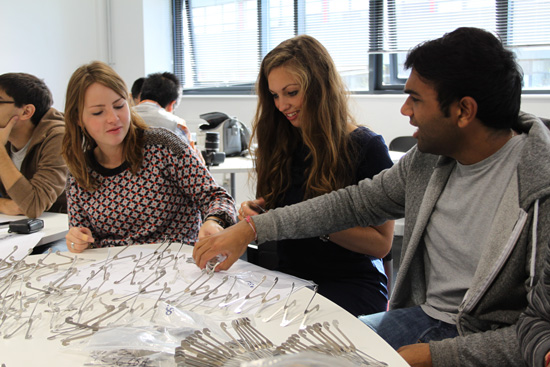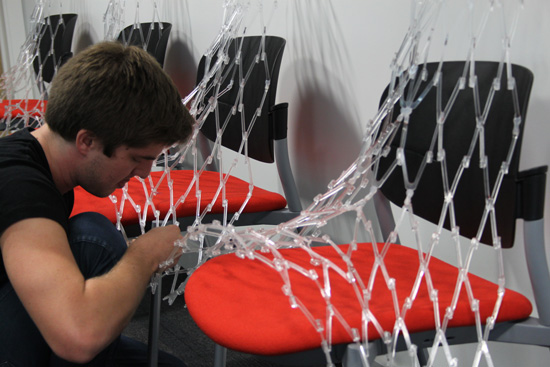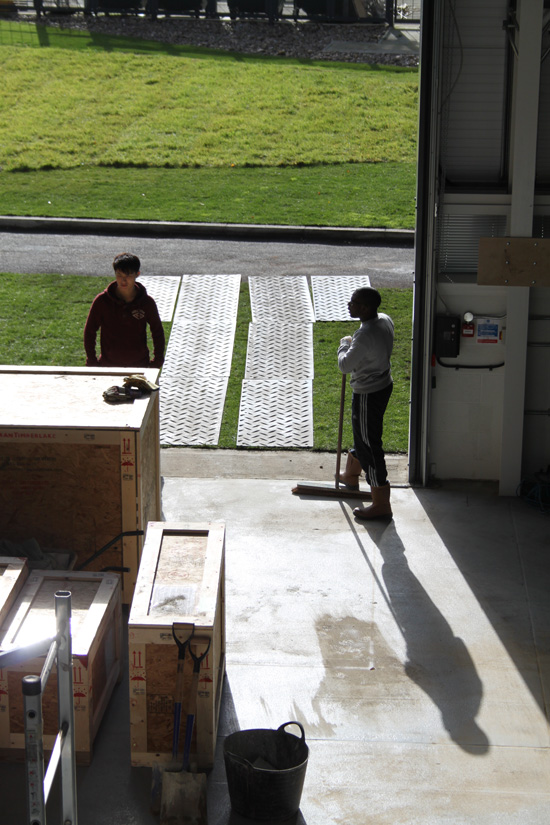



October 2012

Protocell Mesh exhibit by Philip Beesley Architects
From philipbeesleyarchitect.com:
“The Protocell Mesh project integrates first-generation prototypes that include aluminium meshwork canopy scaffolding and a suspended protocell carbon-capture filter array. The scaffold that supports the installation is a resilient, self-bracing meshwork waffle composed of flexible, lightweight chevron-shaped linking components. Curving and expanding, the mesh creates a flexible hyperbolic grid-shell.
Arrayed protocells are arranged within a suspended filter that lines this scaffold. The array acts as a diffuse filter that incrementally processes carbon dioxide from the occupied atmosphere and converts it into inert calcium carbonate. The process operates in much the same way that limestone is deposited by living marine environments. Within each cell of the filter array, laser-cut Mylar valves draw humid air into a first chamber of concentrated sodium hydroxide. The solution enters a second chamber containing waterborne vesicles suspended between upper and lower oil layers. Chalk-like precipitate forming within these vesicles offers an incremental process of carbon fixing.
Surrounding the active flask arrays is a grotto-like accretion of suspended vials containing salt and sugar solutions that alternately accumulate and exude moisture, contributing to a diffusive, humid skin. Scent glands act as lures to encourage occupation of this synthetic aerial soil. ”
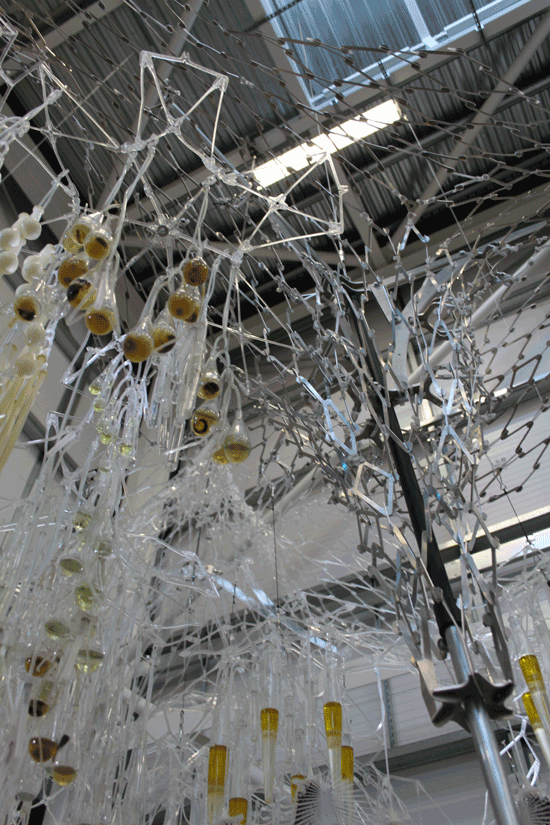
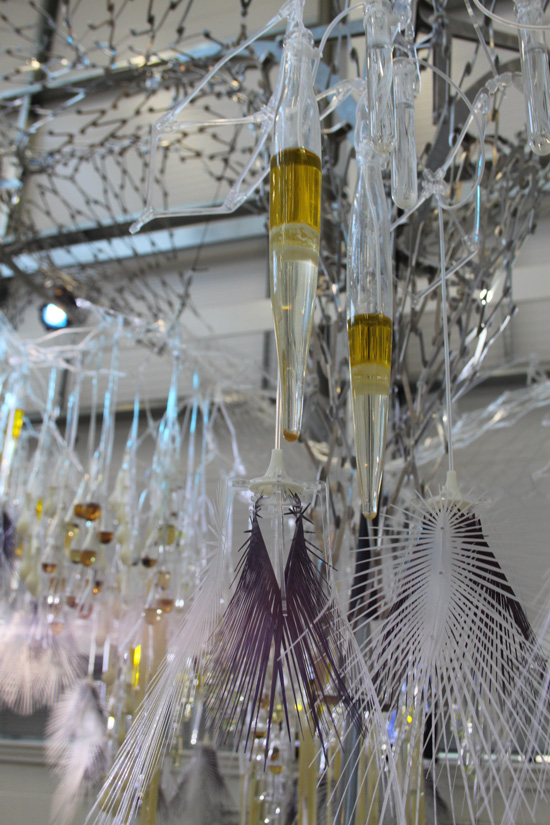
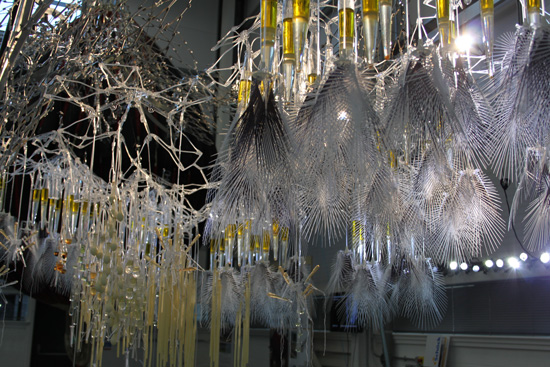

End of exhibition gallery
Unit 1, Year 5 of the University of Nottingham School of Architecture assited in assembling Philip Beesley’s Protocell Mesh, to be exhibited as part of the Prototyping Architecture Exhibition. The exhibition opened on 17th October 2013 to christen the Wolfson Prototyping Hall of the new Energy Technologies Building, on the University of Nottingham's Jubilee Campus.

